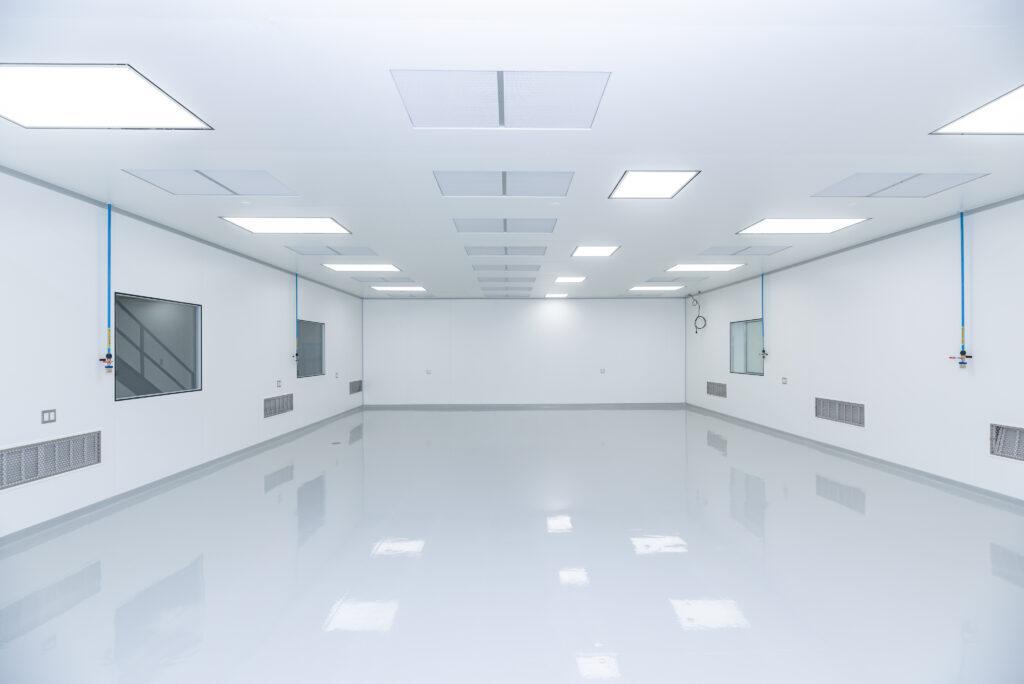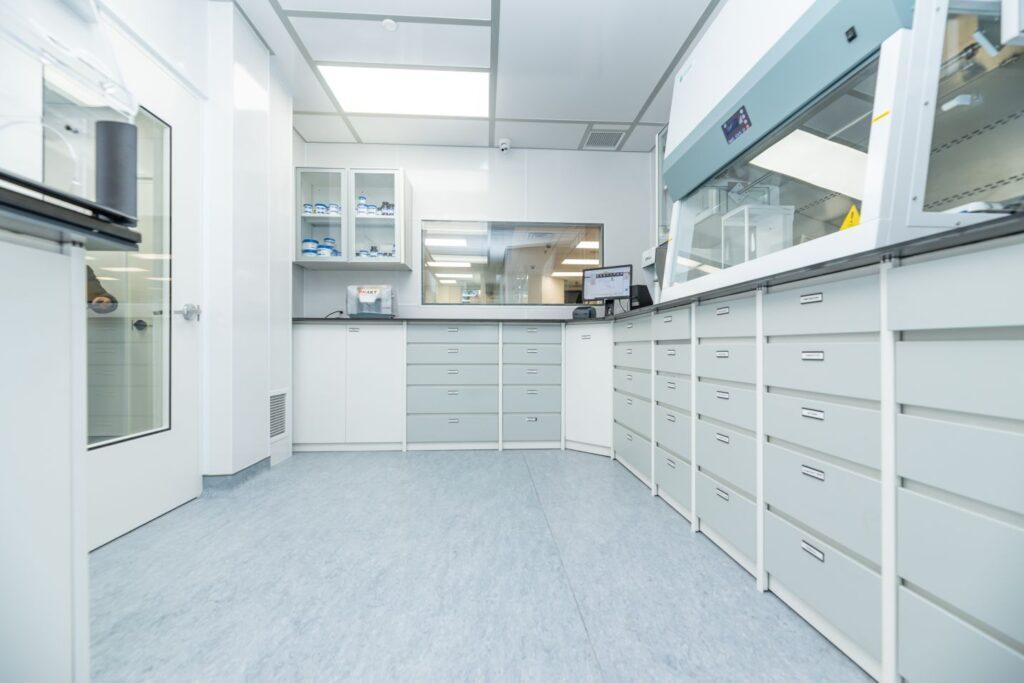Cleanroom Flooring

Cleanrooms are critical environments used in various industries, including pharmaceuticals, electronics, healthcare, and biotechnology, where maintaining stringent cleanliness and contamination control is paramount. One crucial aspect of cleanroom design is selecting the appropriate flooring material. Cleanroom flooring must meet specific requirements to ensure optimal cleanliness, safety, durability, and ease of maintenance. In this article, we will explore the key considerations and best practices for choosing the right cleanroom flooring.
Understanding Cleanroom Flooring Requirements
1. Cleanliness and Contamination Control: Cleanroom flooring must minimize particle generation and accumulation, ensuring a clean and sterile environment.
2. Chemical Resistance: Resistance to chemicals and disinfectants is crucial to withstand routine cleaning and decontamination processes.
3. Static Control: Depending on the application, anti-static or conductive flooring may be necessary to prevent electrostatic discharge (ESD) and protect sensitive equipment.
4. Durability and Longevity: Cleanroom flooring should be able to withstand heavy foot traffic, equipment movement, and potential spills while maintaining its performance and integrity.
5. Compliance with Industry Standards: Familiarize yourself with relevant industry standards, such as ISO 14644 and Federal Standard 209E, to ensure compliance and adherence to specific requirements.

Types of Cleanroom Flooring
Epoxy Flooring
Epoxy is a popular choice for cleanrooms due to its durability and chemical resistance. It is made of a mixture of epoxy resin and hardener, which is applied to the floor as a liquid and then cured to form a hard, smooth surface. This type of flooring is resistant to most chemicals and is easy to clean, making it ideal for cleanrooms.
Vinyl Flooring
Vinyl is another popular choice for cleanrooms due to its durability and resistance to chemicals. It is made of a synthetic material that is resistant to wear and tear and can be easily cleaned and disinfected.
Conductive or Anti-Static Flooring
For environments where electrostatic discharge can damage sensitive equipment or ignite flammable materials, conductive or anti-static flooring materials are essential.
Resilient Flooring
Rubber or synthetic rubber offers excellent durability, shock absorption, and resistance to chemicals, making it suitable for cleanrooms with heavy equipment or machinery.
Terrazzo Flooring
Terrazzo is a durable and long-lasting option that is often used in cleanrooms. It is made of a mixture of marble, granite, or quartz chips set in a cement or epoxy binder. Terrazzo flooring is resistant to chemicals and can be easily cleaned and disinfected.
Here is a summarized table outlining the advantages, disadvantages, and ISO cleanroom recommendations for each type of cleanroom flooring listed.
| Material | Advantages | Disadvantages | ISO Cleanroom Classroom |
|---|---|---|---|
| Epoxy | Durable, chemical-resistant, easy to clean, cost-effective, customizable | Sensitive to temperature changes, has a strong odor during installation, can be slippery when wet | Recommended for ISO 7 and higher-class cleanrooms |
| Vinyl | Durable, water-resistant, easy to clean, cost-effective, slip-resistant, customizable, eco-friendly | Can be slippery when wet, not as durable as epoxy, not suitable for outdoor use | Recommended for ISO 7 and higher-class cleanrooms |
| Conductive or Anti-Static | Electrostatic discharge (ESD) Protection, equipment and product protection, cleanroom safety, particle control, chemical resistance | Limited design options, requires proper grounding and maintenance, higher cost compared to non-conductive options | Recommended for ISO Class 4 to 6 (Conductive), ISO Class 7 to 9 (Anti-static) |
| Resilient | Durable, shock absorptive, chemical resistant, helps in noise reduction, cleanliness and contamination control, comfort, and ergonomics | Limited design options, may require periodic resealing for optimal performance | Recommended for ISO 7 and higher-class cleanrooms |
| Terrazzo | Durable, chemical-resistant, easy to clean, customizable, low maintenance | Expensive to install, can be slippery when wet, may require professional installation, not suitable for outdoor use. | Recommended for ISO 7 and higher-class cleanrooms |
Installation and Maintenance: Best Practices

Proper Surface Preparation: Before installing cleanroom flooring, ensure the substrate is clean, dry, and free from any contaminants, which can compromise the adhesion and performance of the flooring material.
Seamless Installation: Choose options that provide a seamless finish to prevent particle accumulation and facilitate easier cleaning.
Regular Cleaning and Maintenance: Implement a strict cleaning regimen using approved disinfectants and cleaning agents to maintain cleanliness and prevent contamination buildup.
Periodic Inspection and Maintenance: Regularly inspect the flooring for any signs of damage or wear. Address any issues promptly to prevent further deterioration and potential contamination risks.
Consult with Experts: Engage with cleanroom experts or manufacturers to ensure you select the most appropriate flooring material based on your specific cleanroom requirements.
Ensure you consider factors such as cleanroom classification, specific industry requirements, hygiene standards, and budget when selecting the appropriate cleanroom flooring system. Additionally, certain regulations and guidelines might be different from industry to industry, so it’s important to comply with the relevant regulations and guidelines before installation. Consulting with cleanroom experts can help determine the most suitable option for a particular cleanroom environment.
GET IN TOUCH
Complete the form below to get in touch with our team.
